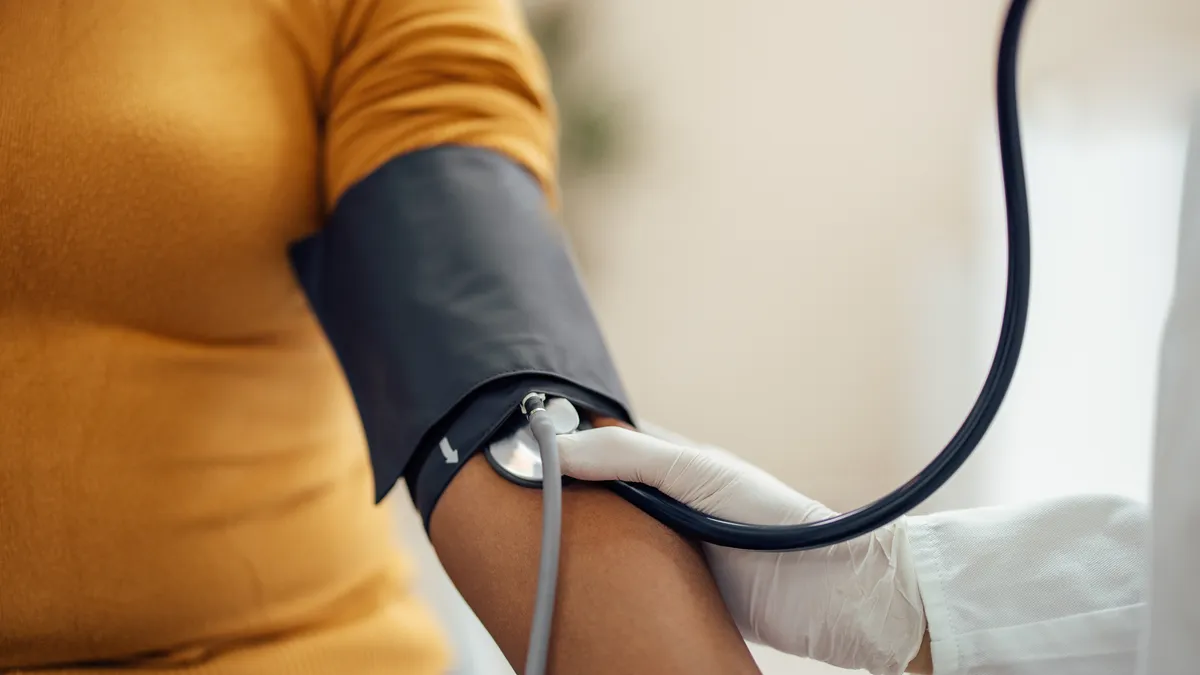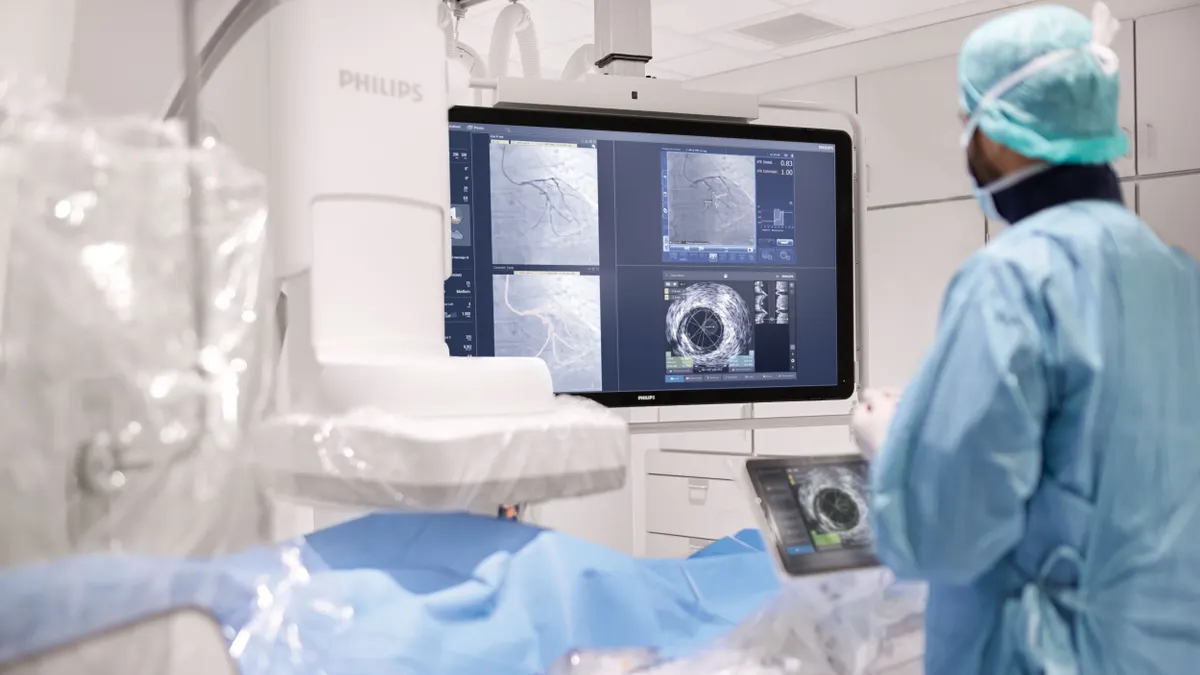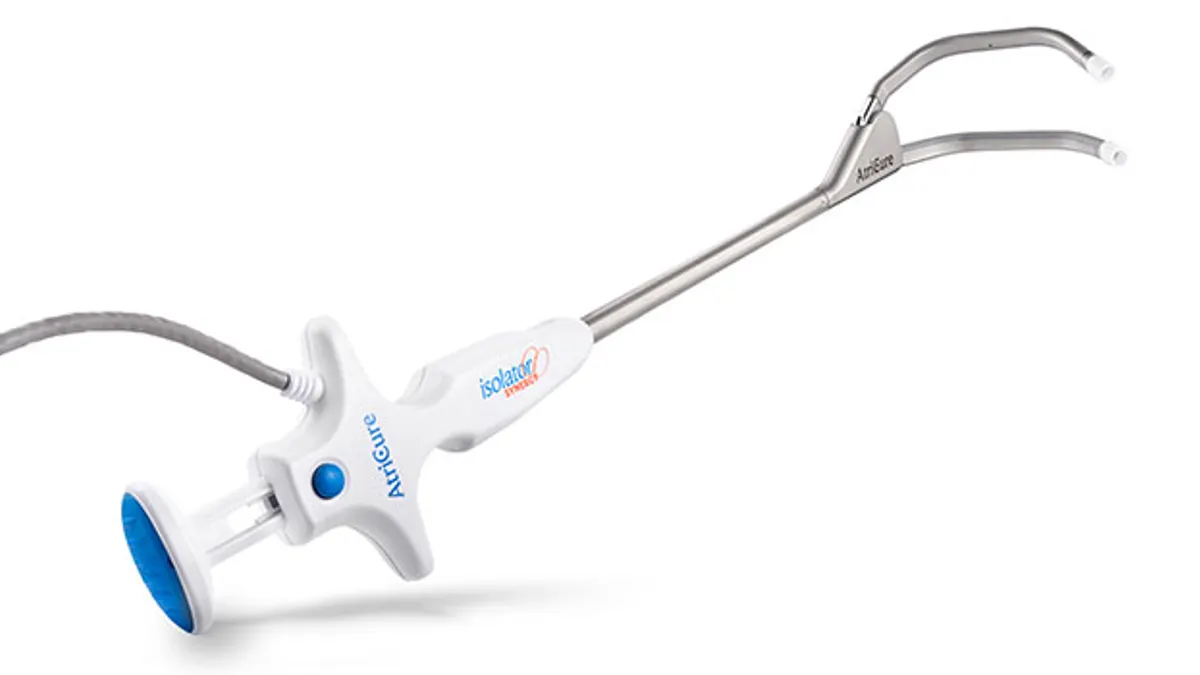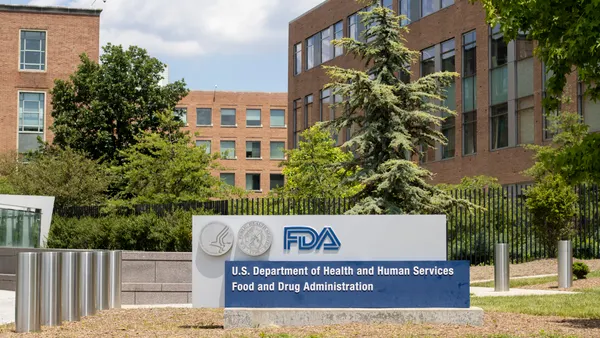Abbott has been growing its diabetes business, striking partnerships and expanding its continuous glucose monitors to more people with Type 2 diabetes. Meanwhile, the company is developing a new type of sensor, one that can detect both glucose and ketones.
Abbott also partnered last year with competitor Medtronic, agreeing to build a glucose sensor that will specifically work with Medtronic’s insulin pumps, pens and automated insulin delivery algorithms.
Chris Scoggins is taking the helm of Abbott’s diabetes business at a busy time for the company and the diabetes tech industry. Scoggins was promoted to Abbott’s executive vice president of diabetes care in December. Since then, Abbbott has collaborated with insulin pump firms Tandem Diabetes Care and Sequel Med Tech to integrate its planned glucose-ketone sensor with their devices.
Scoggins spoke with MedTech Dive about the company’s strategic approach ahead of the American Diabetes Association’s Scientific Sessions in June.
This interview has been edited for length and clarity.
MEDTECH DIVE: What are your top priorities as you’re leading the diabetes business?
CHRIS SCOGGINS: We're excited going into this year's conference for a lot of reasons, but one of the big ones is the change in the American Diabetes Association guidelines relative to CGM and consideration for people who aren't on insulin. That's a big step forward in this category, and we're seeing a lot of positive reaction from stakeholders in the community. It puts a lot of wind in our sails to be able to broaden access, which is a key priority for us.
We're also excited, on the technology side, about bringing to market our dual glucose-ketone sensor, which we think has a tremendous amount of promise in addressing rising ketones that can cause ketoacidosis, if unchanged.
You recently announced an integration with Tandem around the glucose-ketone sensor. Can you share any updates on the timing for that CGM?
The pump partners have been super receptive, and I think they've largely been receptive because they've been hearing the same thing we have from endocrinologists. This is an exciting new technology. Nobody's ever measured ketones continuously. We've had an unexpectedly large positive response from the medical community on interest in participating in this original science. It kind of reminds me of the early days of continuous glucose monitoring, because continuous glucose monitoring helped many people see hypoglycemia that was previously hidden. We're able to see rising ketones before it turns into something severe, like ketoacidosis. There will be exciting news at ADA.
How significant is that for people with diabetes, to be able to detect a rise in ketones before it turns into ketoacidosis?
One of my close friends has a son in university, and last year he was hospitalized three times for ketoacidosis. So, rising ketones have severe consequences, and being able to catch them, just like hypoglycemia on the low end, is an unmet medical need in the community.
Being able to offer that on the exact same sensor — and getting a two-for-one benefit — that causes people a lot of excitement. That's the reason why we're doing this.
With the new ADA guidelines on CGM access for people with Type 2 diabetes who don’t take insulin, have you seen an impact with physicians or insurance providers?
Access to the CGM category in the last four years has doubled on the commercial payer side. When we look at some of the individual states on the Medicaid side, they're actually taking notice of the guidelines and moving forward by changing their own access.
The ADA guidelines have an impact on two fronts: One, other countries’ guidelines often look up to the ADA. The second is on the payer community. Once guidelines are established in a very reputable domain like the American Diabetes Association, it helps advance access within the payer community.
Do you have a breakdown of what the market penetration looks like in the U.S. for insulin users and non-insulin users?
When we look at the category penetration of the intensively managed insulin patient in the U.S., for CGM, it’s getting up there. It’s over 70%. When you look at basal insulin, which was recently reimbursed by Medicare, increasingly reimbursed by most states’ Medicaid, and now broadly reimbursed by the commercial payer plans, the penetration is significantly lower but growing quickly. That’s north of 20%.
Last is the very large, underpenetrated total addressable market of people who are managing their diabetes but aren’t using insulin. The penetration on that large available market is in the single digits, but growing quickly. You have to remember, 500 million people around the world have diabetes. The vast majority of them don’t use insulin.
We've seen a lot of activity within the diabetes space recently such as new devices and Abbott striking more partnerships. How are you thinking about the market and your competition?
We recognize that it's a connected world today, and we want to meet people where they are. Some people use pumps. Some people use pens. Some people use watches.
We have an ambition to make sure we’re the most broadly connected. And I think our recent partnership announcement with Medtronic demonstrates that, because once we're out in the market together with them, we will be the most connected as it relates to pumps.
You've heard about our acquisition of Bigfoot. That's also evidence of our desire to be device agnostic. Some people have a preference for a pen versus a pump. That's where we think that we can add a lot of value, whether it's closing a loop with a pump with automatic insulin delivery, or whether it’s working with a smart pen to be able to help people with dose guidance.
I realize that it could appear that a lot of movement’s happening in the industry, and it is. Med devices are dynamic. We can move quickly and have an impact.
What other technologies are you most excited about?
Abbott's excited about AI, obviously, and what it's going to do to advance healthcare on multiple fronts. We're excited about the partnership, algorithm support, helping people to ease their burden of decision making on connected devices, whether that’s pens or pumps.
There's a lot of talk about GLP-1s and the positive impact they're having in the diabetes community. We are seeing data that says in the real world, the combination of Libre and GLP-1s together is impactful.
We're really drug agnostic — whether it's rapid-acting insulin, whether it's basal insulin, whether it's GLP-1s, we want to serve people on their therapeutic journey. We can help them demystify what is a confusing disease to manage. We know they have different tools that'll include drugs, that'll include food, that include activity, so those lifestyle choices are part of the mix, and that's where we can add a lot of value.



















